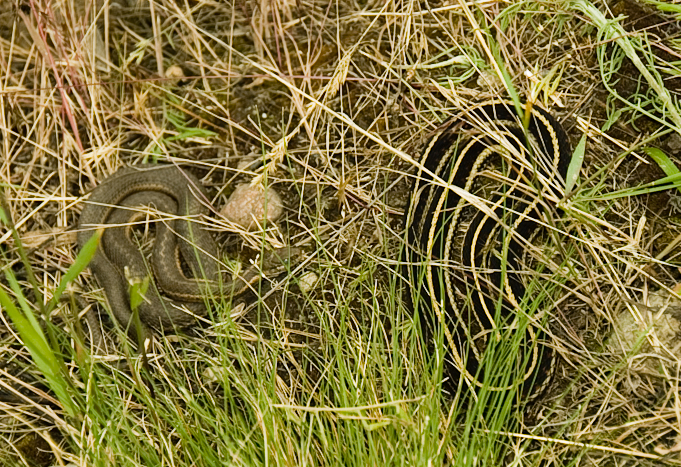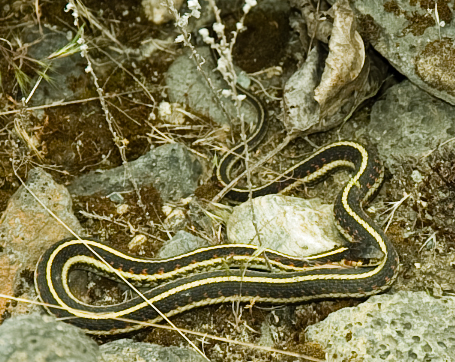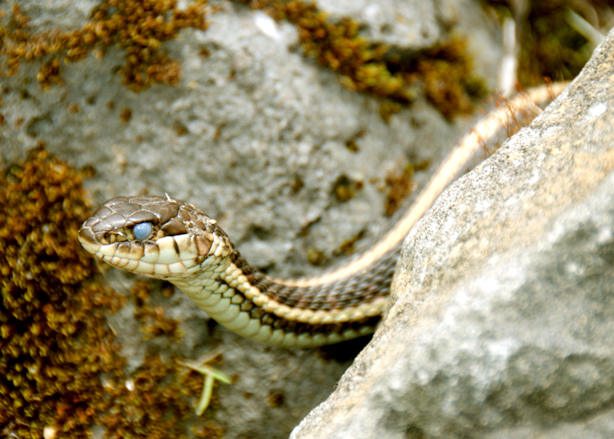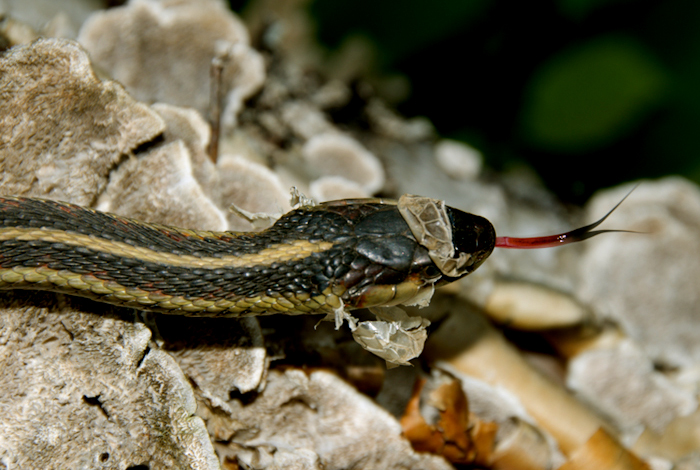COMMON GARTER SNAKE HIBERNACULUM
The Common Garter Snake (Thamnophis sirtalis) is one of the most abundant and widespread of North America’s snakes. In Canada they are mainly found in the far south close to the USA border but a few out-lying populations occur in the northern Rocky Mountains and extreme southern North West Territory.

It is a very variable snake and many subspecies have been described but even within a single population colour and patterning are very diverse. The most common forms may have yellow stripes, or are brown and green blotched with an average length of 55 cm, although specimens exceeding one metre have been recorded. Although their saliva is mildly toxic it is of no threat to man. Their success can be ascribed largely to their very wide dietary range, preying on everything from earthworms to amphibians, small mammals to birds.

There is one aspect of their lifestyle that has brought them
to the attention of scientists and those interested in natural history. And
that is that before the onset of winter in the north of their range large
numbers of garter snakes gather at denning sites, known as hibernacula. One of
the largest such sites is located 6 km from the town of Narcisse,

In our temporary home of Clearwater,

We will be watching from mid-September when the snakes will be returning to this newly discovered hibernaculum.
